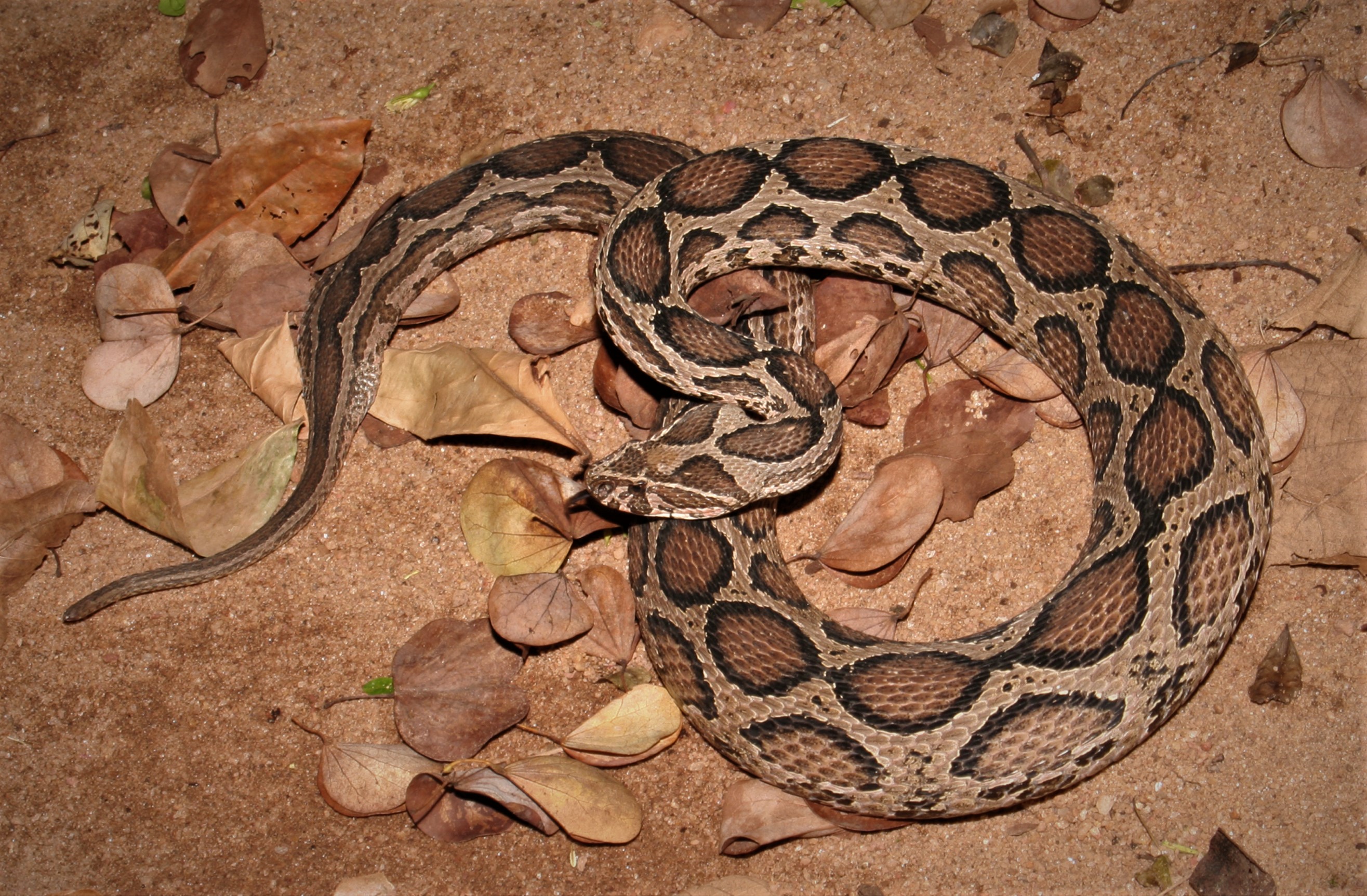In their latest research, Martin et al. estimate the spatial patterns of seven snake species from Sri Lanka and combine these estimations with indices of species’ relative abundance, aggressiveness and envenoming severity to test whether these traits explain spatial patterns of snakebite risk.
Whenever we go out for a walk to the bush, for holidays to an exotic, desolate and beautiful place, the idea of coming across a snake is often lurking in the minds of many of us. These fears are the bread and butter for many agricultural workers and common people living in tropical, developing nations. For a long time, knowledge of how likely such events are in these areas was simply not available, let alone what makes such encounters possible or how likely those encounters are to be harmful.
As with other organisms, there are types of snakes with different venoms. Some species’ venoms digest the flesh around the injection site or liquefy blood, while other venoms paralyse, which naturally result in illnesses that require treatment with different antivenoms.

To prevent bites from different snakes, as with antivenom treatments, we require tailored strategies because snake habits and associated occupational risks are also diverse. The key to improving prevention and treatment, luckily, is similar to explaining what makes for harmful encounters with snakes. Today, thanks to communication between the biologists who study snakes, clinical and public health physicians and ecologists we have learned that snake abundance, their propensity to bite and the toxicity of their venoms make for more frequent harmful encounters.
In our work, using Sri Lanka as a study system, we used the geographical coordinates of encounters with seven different venomous snakes, climate and vegetation geographical data to see if we could predict where each species was most abundant. When we added the abundance predictions and multiplied them by how much experts think each species attacks and produces severe illness, we obtained close estimates of envenoming disease risk. Our findings indicate that abundance, behaviour and venom characteristics are important determinants of risk to people living next to such snakes.

Based on our findings, public health officials may allocate specific antivenoms to treat victims of certain snakes in relation to their abundance, prioritising areas most affected by each species. Likewise, prevention can also be targeted at preventing the most likely types of bites. Furthermore, the relationships between snake species and habitat types and climates open opportunities for using habitat management as a preventive tool.
While our study region is one of the best-studied snakebite hotspots, most of Sub-Saharan Africa and parts of South and Southeast Asia are severely understudied, and our methods constitute an avenue to inform such preventive strategies parting from ecological information that is already publicly available.
Read the full article Integrating snake distribution, abundance and expert-derived behavioural traits predicts snakebite risk in Journal of Applied Ecology.
